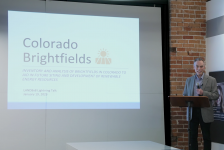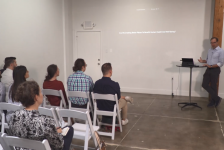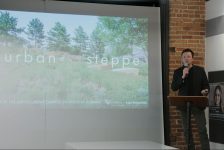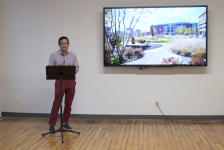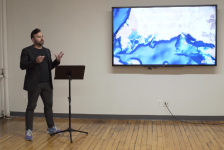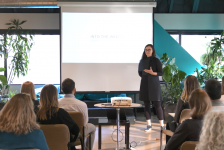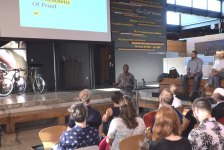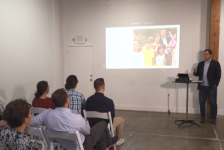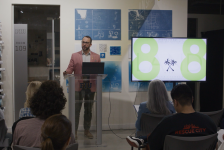Diane Lipovsky, principal and co-founder of the studio Superbloom, joined the Land8x8 Lightning Talks to highlight the creative potential and precedent of her firm’s project, the 1881 Farm Park in Aurora, CO. Whether future park visitors choose to dine at the farm-to-fork restaurant, vend at the local market space, or borrow tools from the seed and tool library, the 1881 Farm Park project aims to educate and engage people with all levels of farming experience.
“Our mission is simple: we must harness the power of the Earth itself” – Kiss the Ground documentary, 2020.
In the context of climate instability, productive landscapes are bountiful and necessary, particularly in the southwest region. Located directly south of the Denver International Airport, the park becomes more than just a park, modeling community-supported agriculture and teaching people to grow their own food. The 1881 Farm Park is resurrected on a former Colorado Centennial homestead. A rare relic from the 1800s, the proposed park site will be used to honor the past challenges and future opportunities of the American West’s landscape.
Working with a diverse and extensive project team (Shape Architects and Colorado nonprofits), the following design principles were kept in mind to envision a community park doubling as a working, urban public farm:
- Connect people to the land. The main farm park locus resides on a 1.5-acre farm and will tell new stories centered around innovative farming practices, such as hydroponics. Strategic bike networks were carefully considered to extend out to the greater community.
- Seek inspiration from the past. The Superbloom landscape architecture team worked closely with the larger design team to understand what site remnants could be salvaged and repurposed in a new way. Salvaged barn materials and silos will present themselves in a new way to not forget the site’s historic roots.
- Work with nature. Diane notes that we must prioritize biodiversity and harness the limited water we do have. Part of the design includes a series of permaculture bands, weaving into and out of the park, to create the start of an urban forage network.
- Regenerate the soil and water systems. Various plant typologies and seed mixes will be incorporated. Green and gigantic stormwater management systems will be conveyed through the park, revealing a visual narrative of the site’s hydrologic systems.
- Nurture biodiversity. The Center for Agriculture will be flanked by pollinator gardens. Birds and bees will be provided with pollinator lodges that will provide fun structures for kids to see and make use of cottonwood trees that are not salvageable.
- Educate and feed the community. The picnic area on-site will provide resources to learn about composting or other farming methods used on-site. Whether you’re in the mood for a community event or just grabbing a coffee, the year-round events will give you plenty of ideas for your kitchen table.
- Develop symbiotic partnerships for a sustainable park. For Diane, one of the most exciting parts of the project was engaging the varying organizations across the state. What is working with other Community Supported Agriculture (CSA) subscriptions? From arid west orchardists to business developers, the team worked to create a sustainable operational maintenance budget to ensure that the program and space evolve and are maintained for future communities.
Diane discovered her love for digging in the soil while farming in a 4-foot-wide Los Angeles tomato plot and hopes to help foster a similar experience for others. Budding from her personal connection to the ground, Diane envisions landscape architecture leaving a more productive footprint through curated public spaces that provide public amenities while also leaving the land better than how we found it.
Check out the referenced Netflix documentary called “Kiss the Ground” and visit Superbloom’s website for more information on how regenerative agriculture and farming techniques can become a more integral part of the evolving landscape architecture practice.


